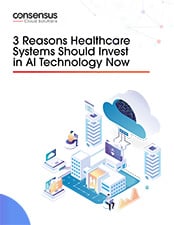Filters
Solution
Collateral Type
Care Setting
Topic
Product
The AI Tool that Matters Most for Clinical Care
The AI Tool that Matters Most for Clinical Care Isn’t ChatGPT - MedCity News
Right-now value could come from extractive AI, a tool that gives organizations the power to put even handwritten text sent via images or PDF by digital fax into a structured data play.
The excitement for artificial intelligence (AI) use cases in healthcare—especially those involving generative AI and ChatGPT—is palpable, with experts predicting generative AI could help unlock $1 trillion in healthcare savings. However the AI solution that holds the strongest potential to strengthen care outcomes and health equity isn’t the one healthcare leaders think of first.
Instead, right-now value could come from extractive AI. It’s a tool that gives organizations the power to put even handwritten text sent via images or PDF by digital fax into a structured data play. It’s also a practical solution for advancing data interoperability without a heavy technology lift to include healthcare’s “digital have-nots,” like post-acute care facilities and health clinics.
A powerful lever for improving health equity
A healthcare organization’s ability to support total care, especially for our nation’s most vulnerable patient populations, depends on access to data that enables a 360-degree view of the patient’s medical history and the factors that influence health, including social determinants of health (SDoH).
Yet according to a recent National Institutes of Health study, 80% of healthcare data is unstructured data: data that isn’t captured or stored in a standardized format, like handwritten notes sent by digital fax. When providers don’t have the ability to intelligently extract this data and make it available directly within clinicians’ workflows, they lose the power to put this data to use in strengthening care. In today’s workflow, this would require manual data entry, which slows down care and is sometimes completed by clinical staff who should be treating patients. Additionally, this increases pressure on providers by making it difficult to find the information they need, when they need it. It also dampens efforts to provide personalized, empathetic care by putting a whole-person view of the patient just out of reach.


